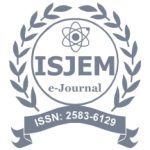Dual-Hazard Blast and Seismic Risk Assessment on Metro-Station Using Finite Element Modeling
- Version
- Download 7
- File Size 894.45 KB
- File Count 1
- Create Date 4 June 2023
- Last Updated 4 June 2023
Dual-Hazard Blast and Seismic Risk Assessment on Metro-Station Using Finite Element Modeling
Rusikesh Jadhav1 and Mr. Sharif Shaikh2
1M. Tech Student in Structural Engineering, G H Raisoni College of Engineering, Maharashtra, India
2Assistant Professor in Structural Engineering, G H Raisoni College of Engineering, Maharashtra, India
Abstract: India, being a developing country, relies on the Metro transit system as a crucial mode of public transportation. This research focuses on the comprehensive analysis of a Metro-station, considering both linear dynamic analysis and blast pressure analysis using the integrated software MIDAS Civil (2020) v2.1. Metro-stations are unique structures that combine the features of a station and a bridge, characterized by their significant dimensions of 140m X 21m. Due to their substantial size and complex nature, it is essential to thoroughly analyze, design, and maintain these heavy and dense structures. In this study, we specifically examine a real-life Metro-station geometry constructed with prestressed concrete materials, subjected to multiple loading scenarios, including blasts, seismic events, and their dual combination. The static and linear dynamic analyses are conducted using the MIDAS Civil (2020) v2.1 software. Additionally, a linear dynamic analysis is performed to assess the behavior of the Metro bridge system, utilizing response spectrum analysis. The results indicate an increased stiffness of the bridge system in the longitudinal direction. Considering the growing frequency of terrorist activities, Metro-stations are prime targets for potential blast attacks, aiming to cause significant damage to both humans and infrastructure. Therefore, we analyze the Metro-station's response to TNT mass blasts ranging from 1 kg to 10 kg. Stress and deformation calculations are performed for each increment of TNT mass, providing valuable insights. Metro-stations are densely populated public areas, emphasizing the importance of this study. For research purposes, we focus on a single span of the Metro-station with a length of 13m. Given the seismic activity in the region, the probability of an earthquake occurring during the structure's lifespan is at least once. Consequently, the structure is designed to be earthquake resistant rather than earthquake proof. To evaluate the structure's response, linear dynamic analysis, specifically response spectrum analysis, is conducted using the Midas Civil software, considering parameters such as displacement, modal behavior, and time period. These analyses encompass single hazard cases, where the structure's failure is dominated by specific loads. Multi-hazard engineering, a relatively novel concept in civil-structural engineering, addresses the failure of structure and infrastructure system portfolios under combined loading conditions. Thus, the objective of this study is to investigate the structure's performance in a multi-hazard scenario, considering the combined effects of multiple load cases.
Keywords: TNT, Midas Civil, Blast Analysis, Dynamic Linear Analysis, Response Spectrum Analysis, Metro-Station, Prestressed Concrete
Download

